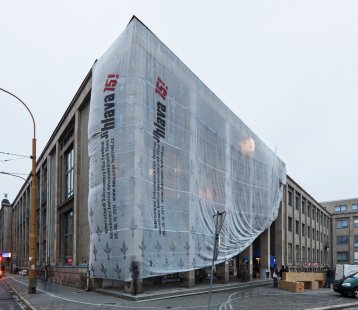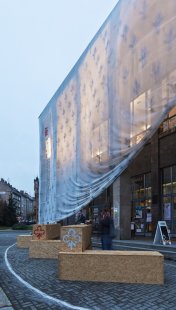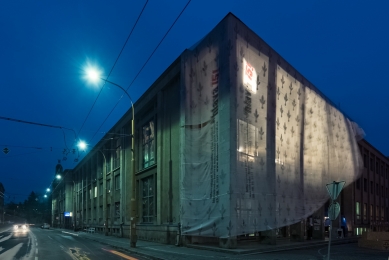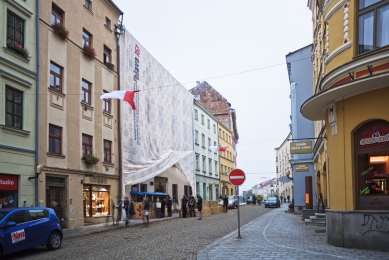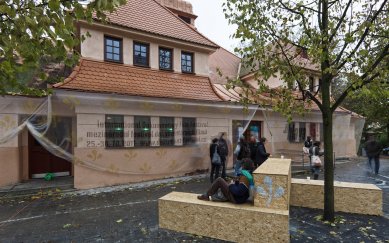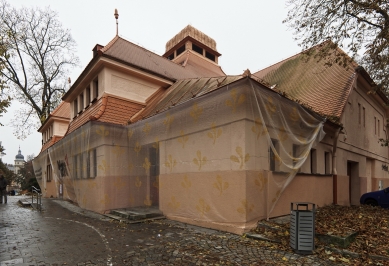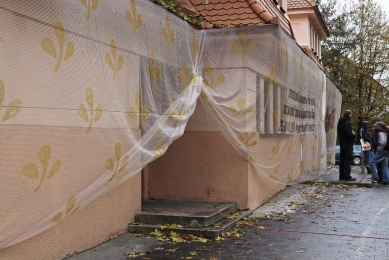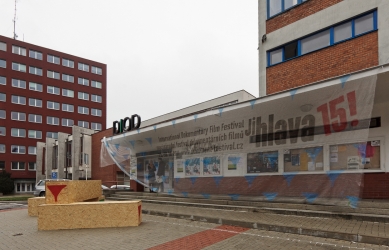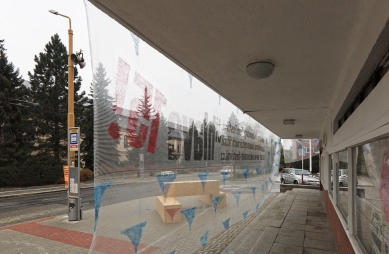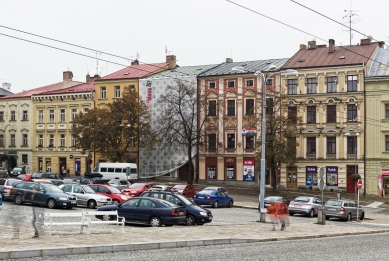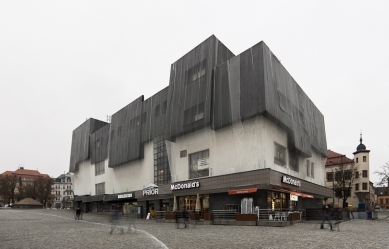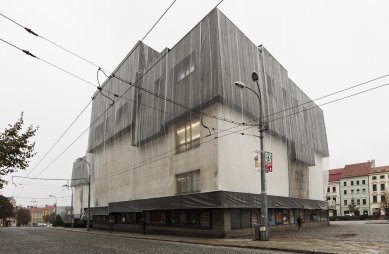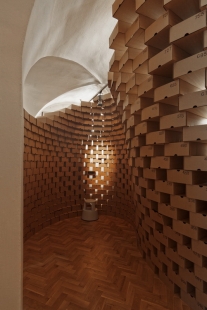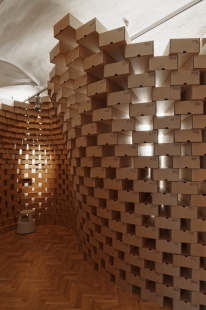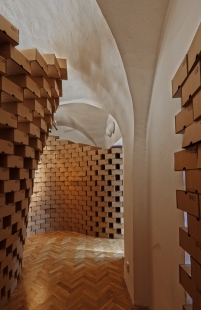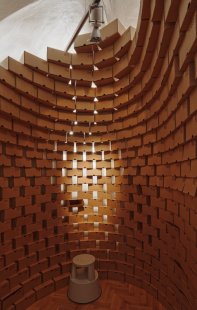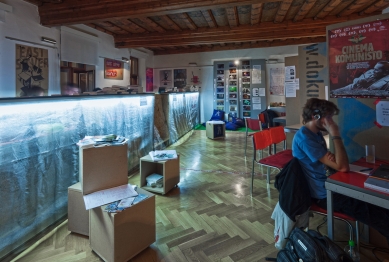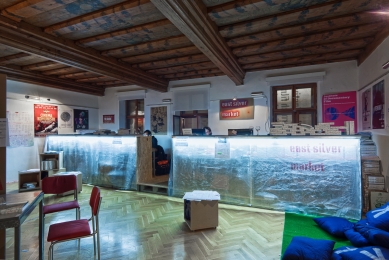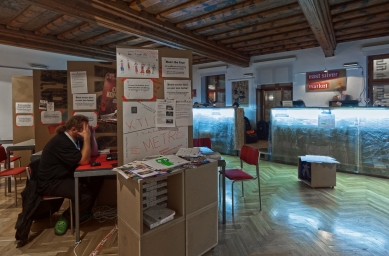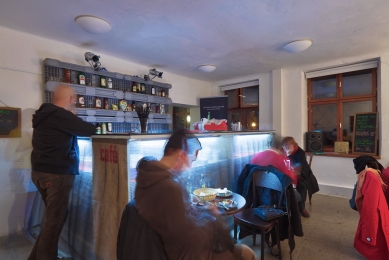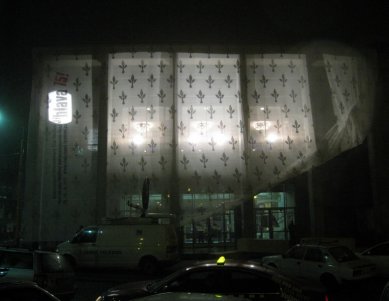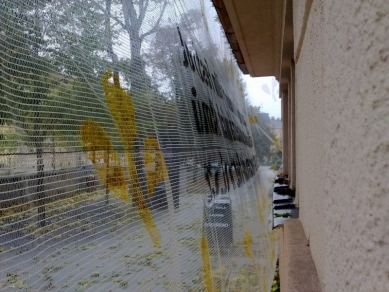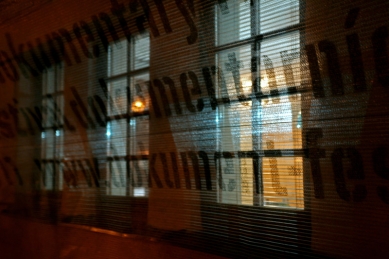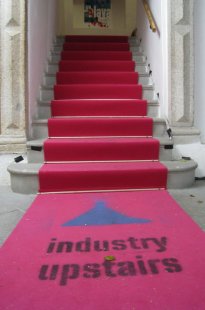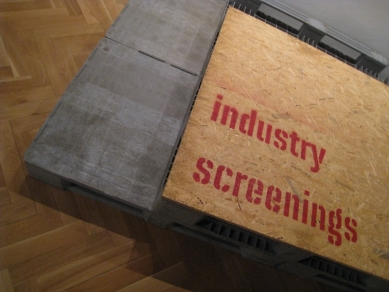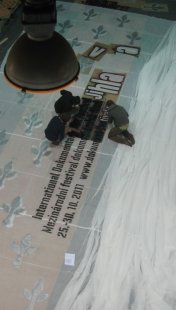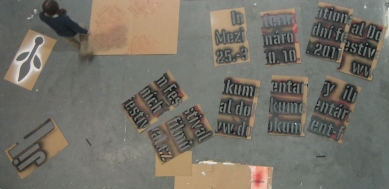
Architectural form of the 15th year of MFDF Jihlava

On Tuesday, October 25, 2011, the International Documentary Film Festival Jihlava was launched, and it is the largest and most respected event of its kind in Central and Eastern Europe. It is probably also the only film festival that strives to imbue each edition with an original architectural form that could consistently unify the temporarily constructed spaces of the festival centers as well as their face advertising the festival's presence in the city. Despite the increasingly deepening financial problems that the festival, as is the case with all non-commercial culture, has to face, festival architects Josef Čančík and Vít Šimek made an effort this year as well, as the festival celebrates its 15th birthday. The festive atmosphere (whether it is a birthday celebration or a "Titanic party," in the spirit of which the opening evening was held, raising the metaphorical question of whether society is already in the moment just after a glacier impact, when it is still not fully aware - apart from a few individuals - of the inevitability of the disaster) was supported by the adornment of the festival centers. Five buildings hosting the festival were dressed in "evening gowns." For each of them, fabric with a different decor was "tailored." The largest gown was given to DKO (a cultural center with two large festival cinema halls). The dresses for the festival center in the Renaissance building of the Vysočina Regional Gallery are only slightly smaller, as are those for the smaller gallery building on Masaryk Square, which hosts an exhibition of the most beautiful festival posters from around the world. The smaller festival cinemas Dukla and Diod also received veils. A bonus for Jihlava is also a discreet veil under which the (un)famous Prior there has been mysteriously shrouded. For the citizens of Jihlava, the temporarily built interiors are less prominent, but no less significant for the festival: The festival café in the DKO cloakroom and primarily the spaces of the main festival center in the OGV building. It houses, besides another festival café, all the services for the audience (accreditation, accommodation dispatch, etc.) and "INDUSTRY," a kind of VIP zone for film professionals, of whom about five hundred arrive at the festival every year. In INDUSTRY, Guest Service takes care of them, the Press Centre for journalists, and finally, East Silver takes care of producers, television dramaturges, and film distributors who come to the festival mainly to purchase new interesting films, providing them a pleasant environment to select from hundreds of films at dozens of workstations. The solutions for the counters, dominating all service departments, are agreeably dressed in veils in the spirit of the exteriors. Echoes of the color and decor of the festival adornment also appear discreetly in the interiors. Everything is underlined by the typography of stencil lettering. An exceptional position is held by an organic structure made up of a thousand "message boxes," essentially mailboxes used by festival guests. The effect of a large number of construction elements allowed for the creation of a kind of cave that grew into a smaller exhibition room of the gallery and forms part of Guest service. The MFDF Jihlava will culminate on Saturday (October 29) evening with the awards presentation during the ceremonial closing. Unfortunately, after that, the festival architecture will disappear, leaving behind nothing but, hopefully, strong memories of the festive atmosphere of the 15th MFDF Jihlava.
The English translation is powered by AI tool. Switch to Czech to view the original text source.
3 comments
add comment
Subject
Author
Date
**
katarina
16.12.11 07:58
Jihlava
docF
20.12.11 07:57
architektura festivalu
arod
23.12.11 03:42
show all comments


